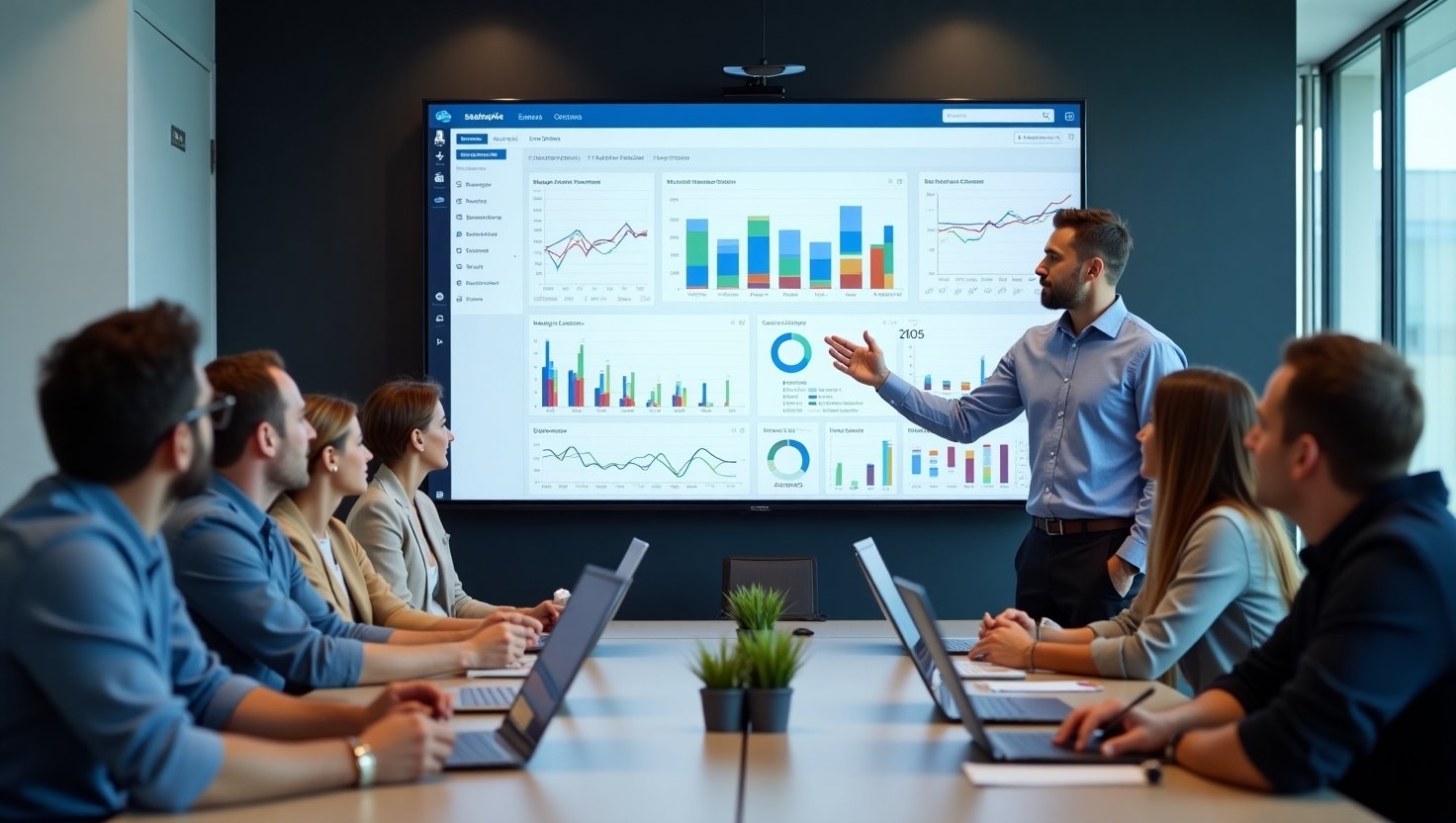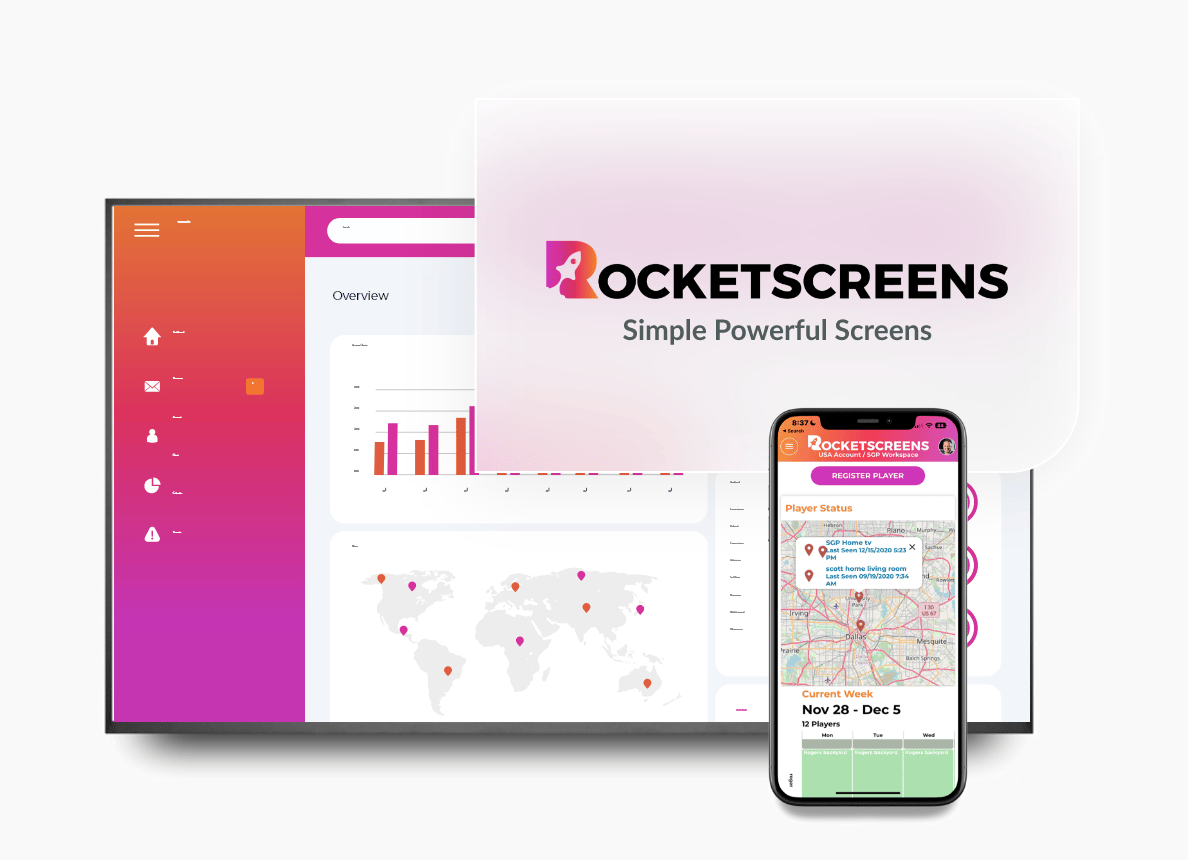
In today's fast-paced world, capturing and holding a potential customer's attention is more challenging than ever. Traditional posters and static signs, while once the backbone of business communication, are increasingly fading into the background. Imagine walking into a warehouse where safety protocols and inventory updates are displayed in real-time, or an office lobby that greets visitors with dynamic, branded content instead of a simple printed sign. This is the power of digital signage, a transformative technology that is reshaping how businesses communicate, engage, and operate.
For a forward-thinking business, whether in logistics, retail, or corporate services, understanding and leveraging cutting-edge tools is paramount. Digital signage is no longer a futuristic concept; it's an accessible, powerful, and essential component of modern business strategy. It offers a dynamic platform to convey information, enhance customer experiences, and streamline operations. This guide will provide a comprehensive overview of what digital signage is, how it functions, and the tangible benefits it can bring to your organization.
What is Digital Signage? A Clear Definition
At its core, digital signage refers to any size of digital display used to broadcast multimedia content to a specific audience at a particular location. Think of it as a private, centrally-controlled television network for your business. Unlike simply plugging a USB drive with images into a TV, a true digital signage system is a network of screens that can be managed, updated, and monitored remotely from a single point of control.
This network-based approach is the key differentiator. It allows for unparalleled flexibility and scalability, enabling a user to control a single screen in their lobby or thousands of screens across multiple international locations with the same ease. The content can be anything from simple text and images to high-definition videos, social media feeds, interactive maps, and live data dashboards. This dynamic capability transforms a simple screen into a powerful tool for advertising, information dissemination, and engagement.
The core components of any digital signage system can be broken down into three main categories:
- Hardware: The physical components, including the screens (displays) and media players.
- Software: The program, often called a Content Management System (CMS), used to create, schedule, and deploy content.
- Content: The actual media and information that is shown on the screens.
How Does Digital Signage Work? The Technology Unveiled
Understanding the interplay between the hardware and software is key to grasping the full potential of digital signage. Each component plays a critical role in delivering a seamless and effective communication experience.
The Hardware Components: Bringing Content to Life
The hardware is the most visible part of the system, the physical interface that your audience interacts with.
- Displays: This is the screen itself. The type of display you choose depends on the location, purpose, and budget. Common types include:
- LCD (Liquid Crystal Display): The standard for indoor use, offering excellent image quality and affordability. They are perfect for corporate lobbies, retail stores, and menu boards.
- LED (Light Emitting Diode): Known for their brightness and durability, LEDs are the go-to choice for large-scale and outdoor applications like billboards and stadium screens.
- OLED (Organic Light Emitting Diode): Offering superior contrast and color accuracy, OLEDs are a premium option for high-end retail and corporate branding.
- Video Walls: Multiple screens are tiled together to create one large, seamless, and high-impact display.
- Interactive Kiosks: These are touchscreen-enabled displays that invite user interaction, perfect for wayfinding, self-service, and product Browse.
- Media Players: This is the small computer or device that acts as the "brain" of the display. It stores the content, processes the instructions from the software, and renders the final image or video onto the screen. Media players can be external boxes that connect to the display via HDMI or integrated directly into the display itself, a technology known as System-on-a-Chip (SoC).
- Mounts and Enclosures: Often overlooked, the mounting hardware is crucial for a professional, secure, and safe installation. For outdoor or industrial environments, specialized enclosures protect the hardware from weather, dust, and potential vandalism.
The Software That Powers It All: The Content Management System (CMS)
If the hardware is the body, the Content Management System (CMS) is the soul of a digital signage network. This software is the central hub where all the magic happens. It empowers users to:
- Create and Upload Content: A user-friendly CMS allows you to easily upload your existing images and videos or use built-in tools to design new content layouts from scratch.
- Schedule Playlists: You can dictate exactly what content plays, on which screen, and at what time. This allows for hyper-targeted messaging, such as displaying a breakfast menu in the morning, a lunch menu in the afternoon, or specific safety protocols during different work shifts in a factory.
- Manage Screens Remotely: The most powerful feature is the ability to update any screen on your network from anywhere in the world with an internet connection. This means no more sending USB drives to different locations or relying on local staff to make updates.
- Monitor and Analyze: Advanced CMS platforms provide real-time status updates on your network's health and can even offer analytics on content playback, helping you understand what messages are most effective.
Most modern CMS solutions are cloud-based, meaning you access the software through a web browser. This eliminates the need for expensive on-site servers and provides greater flexibility, security, and automatic software updates.
The Content: King of the Screen
Ultimately, the success of your digital signage strategy hinges on the quality and relevance of your content. The technology is merely the delivery mechanism. Effective content should be visually engaging, concise, and tailored to the audience and location. The possibilities are vast and include:
- Promotional Content: Videos, animations, and high-resolution images of your products and services.
- Informational Content: Wayfinding maps, directories, event schedules, and weather forecasts.
- Live Data Integration: Displaying real-time information such as KPI dashboards from business intelligence tools, social media feeds, or news tickers.
- Internal Communications: Company announcements, employee recognition, birthday wishes, and safety alerts.
- Interactive Content: Touchscreen applications that allow users to explore information at their own pace.
Why Your Business Needs Digital Signage: The Tangible Benefits
Investing in digital signage is not just about having modern-looking screens; it's about driving real business results. The benefits are felt across customer-facing and internal operations.
Boosts Engagement and Grabs Attention
The human eye is naturally drawn to motion. Dynamic, vibrant digital displays have been proven to capture significantly more views than their static print counterparts. This high level of engagement ensures your message is not just seen, but remembered.
Enables Instant, Real-Time Communication
The ability to update content instantly is a game-changer. A restaurant can immediately remove a sold-out item from its menu. A warehouse manager can instantly broadcast a critical safety alert to all screens on the floor. A corporate office can welcome a VIP guest with a personalized message the moment they walk in. This agility is impossible with printed materials.
Reduces Perceived Wait Times
Entertaining and informing customers or visitors in waiting areas can dramatically improve their experience. Engaging content makes waits feel shorter, reducing frustration and creating a positive brand impression.
Increases Sales and Revenue
Strategically placed digital signs can directly impact your bottom line. They can highlight promotions at the point of sale, showcase high-margin products, and influence impulse purchases. For service-based businesses, they can effectively upsell and cross-sell different packages and offerings.
Enhances Internal Communications & Safety
In a corporate or industrial setting, digital signage is a powerful tool for unifying a workforce. It breaks through email clutter to deliver important HR announcements, celebrate team successes, and display performance metrics. In logistics and manufacturing, it's invaluable for reinforcing safety protocols and displaying real-time operational data, leading to a safer and more efficient workplace.
Superior Long-Term ROI
While there is an initial investment, digital signage eliminates the recurring costs of designing, printing, distributing, and replacing traditional signs. Over time, it becomes a highly cost-effective communication channel.
Digital Signage in Action: Applications Across Industries
The versatility of digital signage makes it a valuable asset in virtually any sector.
- Retail: Digital window displays to attract foot traffic, in-store promotions to drive sales, and endless-aisle kiosks that allow customers to browse and order products that are not physically in stock.
- Corporate & Office Environments: Impressive welcome screens in lobbies, digital meeting room signs that sync with calendar systems, KPI dashboards in sales areas, and informational screens in break rooms to foster a connected company culture.
- Transportation and Logistics: This is a sector where real-time information is critical.
- Warehouses: Displaying docking schedules, inventory levels, order fulfillment progress, and critical safety warnings.
- Transportation Hubs: Real-time arrival and departure boards, wayfinding, and advertising.
- Moving Company Offices: Showcasing client testimonials, explaining service tiers, and providing helpful moving tips to customers in the waiting area.
- Healthcare: Navigational wayfinding in large hospitals, managing patient flow in waiting rooms, and facilitating communication between staff.
- Hospitality: Digital concierge services in hotels, dynamic menu boards in restaurants, and promotional screens for spa services or special events.
- Education: Broadcasting campus-wide announcements, promoting student events, and issuing emergency alerts across university buildings.
Getting Started with Digital Signage: A Simple Roadmap
Embarking on your digital signage journey can be broken down into a few key steps:
- Define Your Goals: What do you want to achieve? Increase sales? Improve internal communication? Enhance visitor experience? Your goals will dictate your entire strategy.
- Choose the Right Solution: Select the appropriate hardware (screens, players) and software (CMS) that align with your goals and budget. Consider starting small and choosing a scalable solution.
- Plan Your Content Strategy: Who is your audience? What message do you want to convey? Plan a content calendar just as you would for any other marketing channel.
- Install and Configure: Ensure professional and secure installation of your hardware and configure the software to your specific needs.
- Measure, Refine, and Grow: Use analytics to see what's working. Don't be afraid to test new content and layouts. Refine your strategy based on the results and scale your network as your needs evolve.
Digital signage has evolved from a simple novelty into a fundamental communication platform for successful businesses. Its ability to deliver dynamic, targeted, and real-time content provides a clear advantage in a crowded marketplace. By centralizing control, reducing long-term costs, and significantly boosting engagement, digital signage offers a robust return on investment. For any organization looking to modernize its communication, improve operational efficiency, and create more meaningful connections with its audience—be they customers or employees—the message is clear: the future of communication is digital, dynamic, and on-screen.





